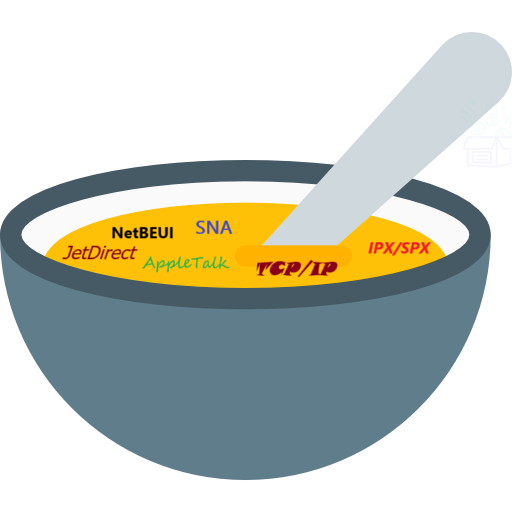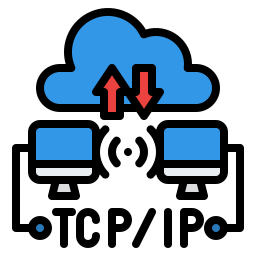The Case for Open Finance - Part 1
Openness rules!
Executive Summary
In this series of articles, I will highlight the importance of open standards and open source in fostering innovation in the financial services sector. This article discusses the benefits of open technology versus closed or proprietary technology. I look at the concept of openness from a standards and software source code perspective. Using the Internet as an example I show the technical, commercial, and social benefits of openness.
Introduction
According to the U.S. Department of Energy, an industry standard is "a set of criteria within an industry relating to the standard functioning and carrying out of operations in their respective fields of production. In other words, it is the generally accepted requirements followed by the members of an industry. It provides an orderly and systematic formulation, adoption, or application of standards used in a particular industry or sector of the economy. Industry standards vary from one industry to another. Industry standards facilitate global as well as domestic competitiveness."1 Industry standards can be classified as open or closed, where the free availability of the standards documents to non-industry members may be used as a prima facie determinant. Similarly, a software application may be said to be open or closed source based on the free availability of the source code. Free in both the aforementioned cases refers to the acquisition costs (gratis) and/or to the right to reuse the intellectual property (libre).
In practice, industry standards and software source code cannot adequately be classified based on the rigid dichotomy between open and closed. Diaz-Marta and Ferrandis2 highlight the need to focus on a grayscale concept called the openness of a standard or source code instead of the binary open-or-closed concept. They propose an openness criteria based on three dimensions, which I will paraphrase as membership, control, and usage. Membership looks at who is participating in the standards setting process or in writing the source code (i.e. is it open to everyone who will be using the standard or the software application?). It also looks at the degree of involvement of the participants. And finally, it looks at when participants joined the standards setting process or source code development effort. Control deals with the due process in the setting of the standard or the writing of the code. Is the process transparent? How is consensus reached, as well as equality or proportionality in the decision making. Usage deals with the general principles of non-revocability and non-conditionality. For copyrighted technologies, it deals with the public availability of code: enabling its use, inspection, modification and distribution. While for patent-protected technologies it deals with availability of access (no refusal to license, FRAND license) and pricing. Using these dimensions and criteria, Table 1 shows a taxonomy of openness adapted from Diaz-Marta and Ferrandis.
The Open Finance Team would like to extend the taxonomy into an openness index. This index may, for example, be used to compare the openness of technologies that have similar or overlapping functionalities. We invite members of the community who are interested in working on this effort with us to contact us.
Importance of Open Standards for Innovation
To highlight the immense benefits of open standards for technological and social innovation I will use the example networking protocols for computers. A network protocol is a set of standards that defines how two or more computers will communicate with each other to form a network. The standards are very detailed, they define everything from the physical medium that will be used, how this medium will be accessed, how the applications format the messages to be exchanged, to how errors and failures will be addressed among many properties and functions. In the early 1990s when I began my career as a network engineer it was common for each major computer hardware or software vendor to have their own proprietary networking protocol. For example, Microsoft had NetBEUI, Apple had AppleTalk, Digital Equipment Corporation had DECnet, IBM had SNA, Novell had the IPX/SPX protocol suite, and Hewlett Packard had JetDirect for networked printers. Figure 1 shows the cacophony of network protocols in the pre-WWW age.
If you worked at an organization that used a mix of network protocols where, for example the sales and marketing department used Apple computers and printers, the rest of the desktop users used Microsoft DOS/Windows PCs and HP printers, and the servers were from Sun Microsystems running Solaris with TCP/IP as the protocol, getting users across the organization to communicate and share digital resources was a huge challenge. According to Luoma-aho and Halonen, communication is both a facilitator and enabler of innovation,3 based on this we can conclude that the communication and data sharing challenges mentioned in the mixed network protocol scenario above would likely have hampered innovation within that organization.
The Internet is a network of networks based on an open suite of network protocols, often referred to as the TCP/IP. "The invention of the World Wide Web in 1989 by Tim Berners-Lee at CERN, as an application on the Internet, brought many social and commercial uses to what was previously a network of networks for academic and research institutions."4 Pretty soon the vendors mentioned before, in order to remain competitive, had to support TCP/IP to be able to get their users onto the Web. Given that TCP/IP is an open standard, vendors were able to relatively easily develop their own Internet-based applications, such as web servers and web browsers and users could access the data on the Internet regardless of the which vendor's product they were using. Most of the vendors with the non-Internet network protocols mentioned above soon abandoned them in favor of TCP/IP. The openness of TCP/IP has led to on-going innovations like the Web, the Cloud, social media, and many other technologies which have transformed industries and society.
According to Almeida et al.,5 the use of open standards and open-source offers the following benefits:
Avoid Vendor Lock-in: The use of open standards and open-source helps mitigate against vendor lock-in. Since the specifications are known and open, it is possible to get another party to develop a comparable solution that adheres to the standards.
Enable Interoperability: Open standards and open-source facilitate interoperability between systems from different parties who may use platforms provided and supported by competing vendors. This provides for enhanced data interchange and exchange. End users will not be required to use the same hardware or software from a specific vendor to read or write data files.
Mitigate Against Data Obsolesce: The use of open standards and open-source offers better protection for the data files created by an application against obsolescence of the application. It is often possible to build an older open source application in order to open obsolete data files. The same cannot be said for proprietary systems that have been discontinued.
Foster Innovation & Competition, and Stable Markets: Open standards and open-source enable innovation, facilitate the diffusion of new technology, expand market access, boost transparency, create market stability. The open standards process balances change and continuity in the marketplace.
There are however some potential limitations associated with the use of open standards and open-source, in particular the latter.
Community Membership & Commitments May Vary Over Time: The continued support of an open-source project depends on an active community. In many cases membership and participation in open-source projects is voluntary. Members of an open-source project may have work commitments with other employers that demand their primary attention. At times the number of members or their commitment may decline to a level where it is no longer possible to support the open-source project.
Customer Support May be Unpredictable: Another limitation related to the voluntary nature of the membership and participation in some open-source projects is that the level of customer support can be unpredictable. Any bug fixes or feature requests may go unattended for the smaller, less-resourced open-source projects.
Conclusion
In this article I discussed the benefits of open technology versus closed or proprietary technology. I also explored the concept of openness from a standards and software source code perspective using the earlier work of Diaz-Marta and Ferrandis. Finally, I demonstrated the technical, commercial, and social benefits of openness using the Internet’s dependence on TCP/IP as an example.
In the next installment of this series, we will look at softwarization, open-source software, open hardware, and open AI models.
"Industry Standard Definition," U.S. Department of Energy, Aug 19, 2016. https://www.directives.doe.gov/terms_definitions/industry-standard
Vicente Zafrilla Díaz-Marta and Carlos Muñoz Ferrandis, "Open Standards and Open Source: Characterization and Typologies," Journal of Intellectual Property Law & Practice, vol. 15, no.9, 2020, pp. 700-710. https://doi.org/10.1093/jiplp/jpaa101 (paywalled)
Vilma Luoma-aho and Saara Halonen, "Intangibles and Innovation: The Role of Communication in the Innovation Ecosystem," Innovation Journalism, vol. 7, no. 2, Nov 4, 2010. https://www.innovationjournalism.org/archive/injo-7-2.pdf
"Protocol Wars," Wikipedia. https://en.wikipedia.org/wiki/Protocol_Wars
Fernando Almeida, José Oliveira, and José Cruz, "Open Standards and Open Source: Enabling Interoperability," International Journal of Software Engineering & Applications (IJSEA), vol.2, no.1, January 2011. https://airccse.org/journal/ijsea/papers/0111ijsea01.pdf




